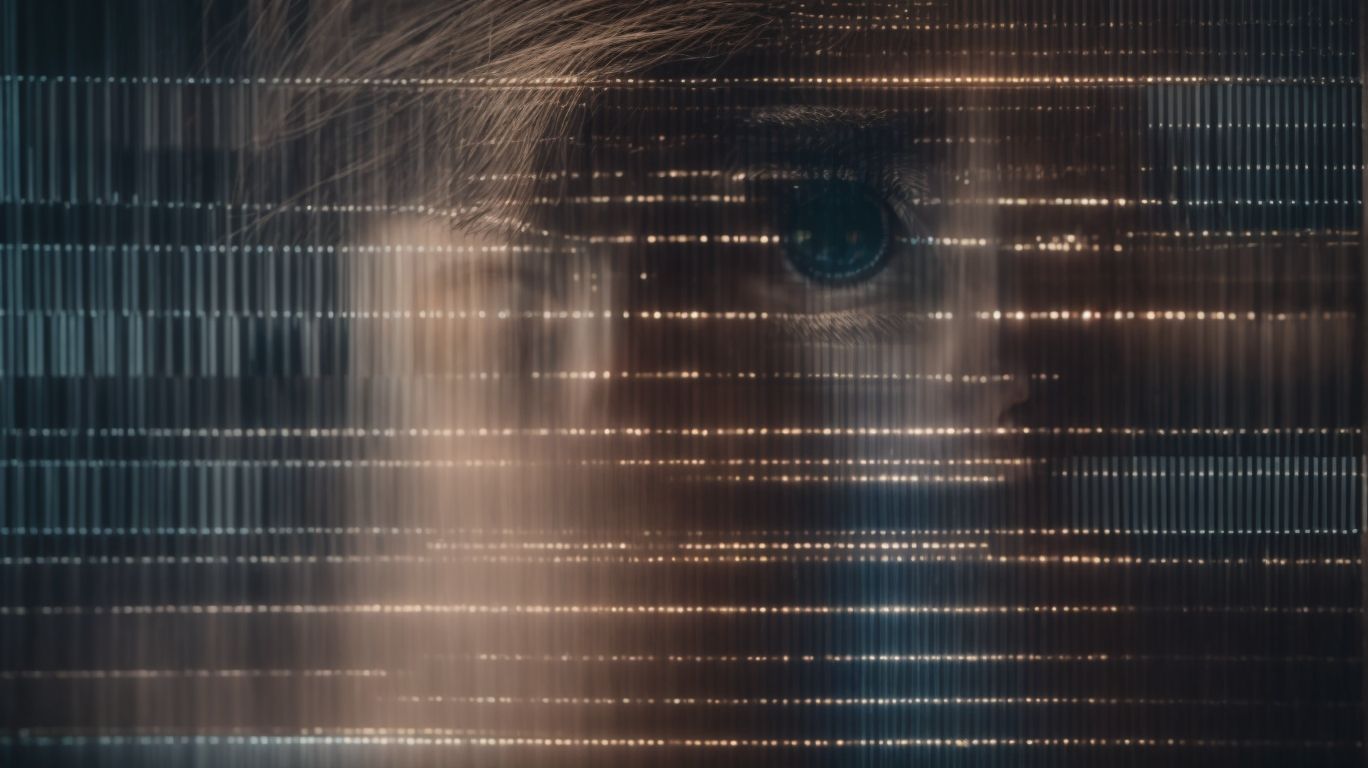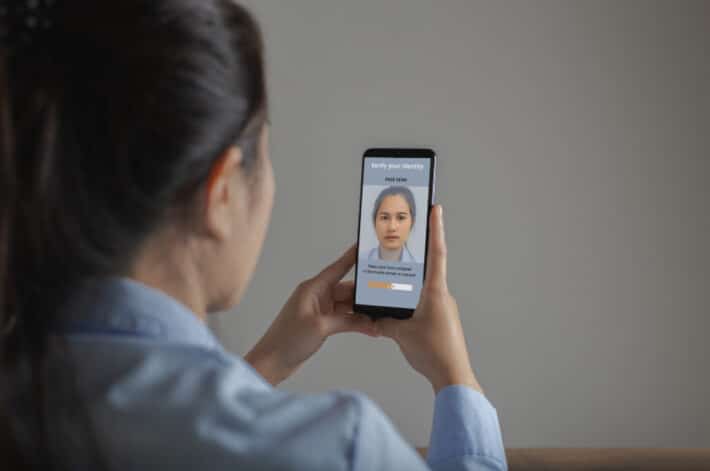Maintaining Privacy: The Effects of Facial Recognition Identity Verification

Facial recognition technology has become increasingly prevalent in our everyday lives, from unlocking our smartphones to gaining access to secure locations.
We explore the ins and outs of Facial Recognition Identity Verification. Discover how it works, the benefits it offers, as well as the concerns and potential risks associated with it.
We delve into current regulations and ways to protect our privacy in the age of facial recognition, aiming to strike a balance between security and privacy in this digital age.
What is Facial Recognition Identity Verification?
Facial Recognition Identity Verification is a process that utilizes facial biometrics to confirm an individual’s identity.
This technology works by capturing unique facial features such as the distance between the eyes, the shape of the nose, and the contours of the face, creating a unique facial template for each person.
Various sectors like security, banking, and mobile devices are increasingly using facial recognition to enhance security measures and streamline processes. It offers a convenient way to verify identities without the need for physical identification documents, making it a cutting-edge tool in the realm of digital security and user authentication.
How Does Facial Recognition Identity Verification Work?
Facial Recognition Identity Verification operates by capturing facial scans, analyzing unique facial features, and comparing them with stored data for authentication purposes.
This technical process involves using advanced algorithms to detect the key facial characteristics of an individual, such as the distance between eyes, nose shape, and jawline structure. For security purposes, entities then convert these unique facial features into mathematical data points and encrypt them. Biometric data, which refers to individual physical traits used for authentication, plays a crucial role in facial recognition technology. By utilizing biometric measurements, the system can verify the identity of a person with a high level of accuracy, making it a reliable method for identity authentication in various applications.
What Are the Benefits of Facial Recognition Identity Verification?
Facial Recognition Identity Verification offers enhanced security, improved efficiency, and convenient access for users.
It provides a high level of security by using biometric data unique to each individual, making it extremely difficult for unauthorized access. Facial recognition technology speeds up the authentication process efficiently, eliminating the need for passwords or PINs that users can forget, lose, or have stolen. The user-friendly aspect allows for seamless and intuitive access to various systems and services, without the hassle of remembering complex login credentials. This advanced technology offers a reliable and robust solution for identity verification across various industries.
Enhanced Security
Enhanced Security is a key benefit of Facial Recognition Identity Verification, providing robust protection measures against cyber threats and ensuring data security.
One of the significant cybersecurity measures integrated into facial recognition technology is encryption, which ensures that biometric data remains safe and inaccessible to unauthorized users. We implement strict data protection protocols to prevent any breaches or leaks of sensitive information. Ensuring the security of biometric data is crucial, as biometric identifiers, like facial features, are unique to individuals and require extra safeguarding to prevent identity theft or misuse. By prioritizing the protection of personal biometric information, facial recognition systems offer a reliable and secure means of identity verification.
Improved Efficiency
Improved Efficiency is another advantage of Facial Recognition Identity Verification, leveraging advanced technology and artificial intelligence for seamless authentication processes.
The utilization of facial recognition technology has revolutionized the authentication process, offering unparalleled speed and accuracy in verifying one’s identity. By harnessing the power of artificial intelligence, these systems can quickly analyze facial features and match them against existing databases, significantly reducing the time and effort required for verification. This integration of AI not only enhances security measures but also enhances user experience by providing a swift and convenient verification method, making it a preferred choice for various industries.
Convenient Access
Convenient Access is facilitated by Facial Recognition Identity Verification, offering users quick and secure entry while ensuring user consent and privacy controls.
Users play a crucial role in managing their privacy preferences with facial recognition technology. By incorporating user consent mechanisms and robust privacy settings, individuals can actively control who has access to their facial data. This empowerment allows users to make informed decisions about their privacy and ensure that their personal information is safeguarded.
Providing users with the ability to customize their privacy settings fosters trust and transparency in the facial recognition process, enhancing overall user experience and data protection measures.
What Are the Concerns About Facial Recognition Identity Verification?
Facial Recognition Identity Verification raises concerns related to privacy, ethical implications, and the potential invasion of individual privacy.
One of the main privacy risks associated with facial recognition technology involves entities collecting and storing biometric data, Misuse or compromise of this data could potentially leave individuals vulnerable to identity theft.
Ethical dilemmas arise as well, especially concerning the consent and control over one’s personal information when it comes to facial recognition. The implications of privacy invasion extend beyond just the individual level, posing broader societal implications on surveillance, civil liberties, and technological governance.
Invasion of Privacy
Invasion of Privacy is a significant concern with Facial Recognition Identity Verification, as it involves the collection and storage of personal information, posing privacy risks and potential violations.
These privacy risks stem from the storage of sensitive biometric data used for facial recognition, which, if accessed by unauthorized parties, can lead to identity theft, fraud, or even surveillance.
To address these concerns, we must implement stringent privacy safeguards, such as secure encryption protocols, limited access controls, and regular audits to ensure compliance with data protection regulations.
Without proper safeguards in place, the use of facial recognition technology for identity verification could further exacerbate privacy violations and undermine individuals’ trust in the security of their personal information.
Biased Algorithms
Biased Algorithms pose concerns in Facial Recognition Identity Verification, particularly in facial matching processes, raising legal implications and challenges in privacy compliance.
Facial recognition technology, powered by algorithms, has revolutionized identity verification processes but has also stirred controversy due to issues of accuracy and fairness in facial matching. The crux of the problem lies in the inherent biases lurking within these algorithms, which can lead to misidentifications and wrongful accusations.
The legal realm is grappling with the task of addressing these biases, as they can potentially infringe on individuals’ legal rights and create significant repercussions for businesses if compliance standards are not met.
Privacy compliance, a cornerstone of data protection regulations, is crucial in ensuring that facial recognition systems operate ethically and legally, safeguarding individuals’ sensitive biometric data.
Lack of Consent
Lack of Consent is a critical concern in Facial Recognition Identity Verification, highlighting challenges in user privacy, consent issues, and the necessity for robust privacy enforcement measures.
When entities do not obtain user consent for facial recognition identity verification, it raises significant privacy concerns. Users should have the right to control their personal information and its usage. Without consent, individuals may feel violated and exposed, leading to trust issues with technology providers. Strict privacy enforcement is crucial to safeguard user data and ensure that companies comply with privacy regulations. Implementing stringent privacy policies and transparency measures can help mitigate risks associated with unauthorized data collection and misuse of facial recognition technology.
What Are the Potential Risks of Facial Recognition Identity Verification?
Facial Recognition Identity Verification entails risks such as misidentification leading to identity theft, privacy breaches, and data protection vulnerabilities.
Misidentification in facial recognition systems can sometimes occur due to various factors like lighting conditions or similar facial features, potentially exposing individuals to identity theft threats. Privacy breaches may arise if sensitive facial data falls into the wrong hands, raising concerns about unauthorized access and the misuse of personal information.
Hence, it is crucial for organizations to prioritize robust data protection measures, such as encryption protocols and regular security audits, to safeguard against these risks and uphold consumer trust in the digital age.
Misidentification
Misidentification is a significant risk in Facial Recognition Identity Verification, stemming from inaccuracies in facial scans and the processing of facial images, necessitating enhanced protection measures.
- Issues that contribute to misidentification include varying lighting conditions during image capture, differences in facial expressions or angles, and the presence of facial accessories like glasses or hats. These elements can distort the facial features in the scanned images, leading to errors in the verification process.
- Technological limitations in accurately identifying unique facial characteristics further exacerbate the risks of misidentification. Consequently, there is a critical need for robust protection measures and continuous advancements in facial recognition algorithms to enhance accuracy and reduce the likelihood of misidentification in identity verification processes.
Data Breaches
Data Breaches pose a significant risk with Facial Recognition Identity Verification, underscoring the importance of stringent data protection measures, privacy policies, and privacy safeguards.
These breaches can expose sensitive personal information to unauthorized access, leading to potential identity theft and other cyber crimes. Additionally, implementing comprehensive data encryption protocols and secure storage practices is essential to mitigate these risks.
Well-defined privacy policies play a crucial role in informing users about how their data is collected, used, and protected. Building trust through transparent communication about privacy practices can enhance user confidence in the security of facial recognition systems.
Surveillance State
The Surveillance State risk associated with Facial Recognition Identity Verification highlights concerns regarding privacy rights, surveillance practices, and the need for stringent privacy standards.
As advancements in facial recognition technology continue to evolve, there is a growing fear that unchecked surveillance practices could lead to a breach of individuals’ privacy. Also, ethical considerations surrounding the use of facial recognition extend to concerns about data protection, consent, and the potential for misuse by government agencies or private corporations.
Upholding robust privacy standards becomes crucial to ensure that personal information is safeguarded and that individuals retain autonomy over their identity and activities. Also, striking a balance between security needs and upholding privacy rights is essential in navigating the complexities of a digital age where surveillance capabilities are becoming increasingly pervasive.
What Are the Current Regulations on Facial Recognition Identity Verification?
Current Regulations on Facial Recognition Identity Verification vary globally, with governments enacting privacy laws, regulations, and guidelines to address legal implications.
These regulatory frameworks crucially safeguard individuals’ personal data and ensure that facial recognition technology is used ethically and responsibly.
For instance, private companies in the United States govern the use of facial recognition through a patchwork of state laws and industry guidelines, while the European Union’s General Data Protection Regulation (GDPR) sets strict standards for processing personal data, including biometric information.
Compliance with these legal requirements is essential to protect individuals’ privacy rights and prevent misuse of their sensitive identity information.
How Can We Protect Our Privacy in the Age of Facial Recognition?
Protecting Our Privacy in the Age of Facial Recognition requires proactive measures to address privacy implications, navigate privacy protection challenges, and uphold privacy safeguards.
- One solution to safeguard privacy amidst facial recognition technology is to advocate for stricter regulations and policies governing its use. Additionally, by enacting laws that require clear consent from individuals before their biometric data is collected, stored, or analyzed, privacy can be better preserved.
- Another important strategy is to promote the development and adoption of privacy-enhancing technologies that allow for secure and anonymous data processing. Additionally, raising awareness about the risks associated with facial recognition technology and educating the public on privacy protection measures can empower individuals to take control of their own privacy.
Limiting Use of Facial Recognition
Limiting Use of Facial Recognition is a crucial step in protecting privacy, emphasizing the need for clear privacy guidelines, addressing privacy issues related to facial mapping.
To ensure privacy control and enforcement, companies must strictly adhere to established privacy guidelines when utilizing facial recognition technology. Failure to do so can lead to potential breaches of individuals’ privacy, raising concerns about data security and misuse.
Facial mapping, in particular, poses significant privacy risks as it involves capturing detailed facial features that individuals can exploit for unauthorized surveillance or tracking purposes. Therefore, implementing transparent and comprehensive privacy policies is essential to safeguard individuals’ personal data and maintain trust in facial recognition systems.”
Transparency and Consent
Transparency and Consent play vital roles in safeguarding privacy in the Age of Facial Recognition, highlighting the significance of user consent, privacy controls, and privacy safeguards.
Users need to clearly see how their facial data is being collected, stored, and used, ensuring that they explicitly consent for each applicable scenario. Implementing robust privacy control mechanisms allow individuals to manage and dictate who can access their facial recognition information, placing power back into the hands of the users. It cannot be overstated that stringent privacy safeguards are necessary to protect sensitive personal data from unauthorized access or misuse.
Stronger Regulations and Oversight
Implementing Stronger Regulations and Oversight is essential for maintaining privacy rights, ensuring compliance with legal frameworks, and addressing privacy implications of facial recognition identity verification.
Effective regulations and oversight play a vital role in safeguarding individuals’ personal information and preventing potential misuse of facial recognition technology. Additionally, by establishing clear guidelines and standards, authorities can ensure that organizations handling biometric data follow best practices and adhere to necessary legal requirements. Stringent oversight mechanisms can help monitor the implementation of these regulations, holding accountable those who fail to comply and deterring any unethical behavior. This proactive approach is crucial in protecting individuals’ privacy and upholding ethical standards in the use of facial recognition technology.
Frequently Asked Questions
How does facial recognition identity verification impact privacy?
Facial recognition identity verification technology greatly impacts privacy as it enables the scanning and storing of facial features, which can then identify individuals in various settings.
What is facial recognition identity verification?
Facial recognition identity verification is a technology that uses biometric data from an individual’s face, such as unique facial features, to confirm their identity and grant access to certain services or areas.
What are the potential privacy concerns with facial recognition identity verification?
Some potential concerns include the collection and storage of facial data without consent, the potential for misuse or hacking of this data, and the lack of regulations surrounding its use.
Can facial recognition identity verification be used without consent?
In some cases, entities may use facial recognition identity verification technology without obtaining explicit consent, such as in public areas with surveillance cameras. This raises concerns about privacy and potential misuse of the collected data.
How can facial recognition identity verification protect privacy?
While there are potential privacy concerns with facial recognition technology, it can also provide enhanced security and protection against identity theft. Proper regulations and guidelines can also help ensure the responsible use of this technology.
What measures can be taken to address the impact of facial recognition identity verification on privacy?
Some measures include offering individuals the option to opt out of facial recognition systems, ensuring proper consent is obtained before collecting facial data, and implementing strict regulations on the use and storage of this data. Additionally, organizations using this technology should prioritize data security and regularly update their privacy policies to address any potential concerns.



